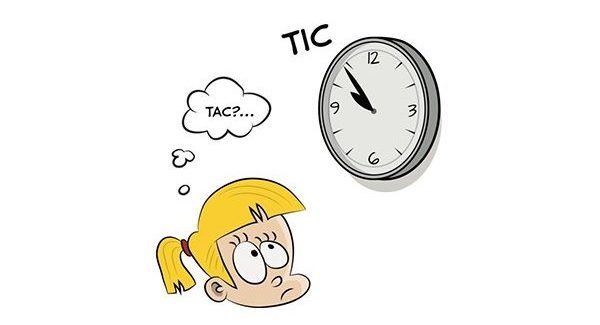Constipation refers to infrequent and “hard to pass” bowel movements. When it comes to constipation, doctors worry more about the consistency of the stools (vs. their frequency).
The stooling patterns of toddlers vary greatly. Many toddlers poop 1-2 times per day, while others go several days without pooping. Doctors are happy as long as the poop is soft, the child seems content, and his/her belly isn’t distended or firm.
If the poop is hard, looks like pellets, and the child is straining to go to the bathroom, then he/she may be constipated.
PediaTip: To be on the safe side, let the doctor know if your toddler hasn’t pooped for 3+ days (disclaimer: doctors vary in terms of when they want to be called about constipation). If your child is super cranky, starts vomiting, or develops a firm and bloated belly along with the constipation, call the doctor regardless of when your little one pooped last.
Constipation Can be a Literal Pain in the *ss and is Known for Causing Abdominal Pain and Bloody Stool.

- Abdominal Pain: Constipation is the No. 1 cause of abdominal pain in kids. It can get so uncomfortable that it mimics appendicitis (especially if the pain is localized to the right lower part of the abdomen).
A classic scenario is a kid who ends up in the ER with intense abdominal pain and a concern for appendicitis. After the ER doctor asks the parents a bunch of questions and does an abdominal x-ray, a diagnosis of constipation is made. The parents then head home with their child, feeling sheepish, but relieved.
- Bloody Stool: Constipation is also the No. 1 cause of blood in a toddler’s poop. Why? Because kids can get a small cut around their anus (fancy name: anal fissure) when they straining to get a hard poop out. Anal fissures produce bright red blood on the toilet paper, the baby wipe, or the outside of the stool. They hurt too!
The Good News: Anal fissures heal quickly on their own. If you see blood in your toddler’s poop, call the doctor, just to be on the safe side.
Get Wise(r) about anal fissures here.
In addition, go here for a review of weird-colored poops and which ones docs worry about.
How is Constipation Diagnosed?
Constipation is typically a clinical diagnosis (based on the child’s symptoms). Some doctors will confirm their suspicions, however, with a simple abdominal x-ray.
What Causes Constipation?
The Top 4 Causes of Constipation in Toddlers Are:
1. Too little fiber in the diet.
2. Not drinking enough water.
3. Drinking too much whole milk (more than 16-24 ounces per day).
4. “Withholding” poop:
Note: This withholding poop behavior tends to rear its ugly head during potty training (around 2.5-3 years) because kids don’t want to poop in the potty. A vicious cycle can develop in which the child refuses to poop, becomes constipated because of it, and then really doesn’t want to “go” for fear that it will hurt on the way out.
Children withholding stool often look like they have to go to the bathroom, but instead of pooping, they cross their legs, dance around, squeeze their butt cheeks together, turn red, and slink off into a corner.
PediaTip: Practice “NO pressure” potty training when the time is right (around 2.5-3 years). Why? Because the more stressed out a child gets about pooping in the potty, the more likely he/she is to withhold his/her stool.
Insider Info: Although constipation is usually related to a diet issue (i.e. not getting enough fiber), a drinking issue (ingesting too much milk and not enough water), or a behavioral issue (withholding poop), it can, in rare cases, be caused by an underlying medical problem.
If your child has chronic constipation, his/her doctor may want to investigate the problem further and look for other, less common, reasons for it. For example, the doctor may order special lab tests or imaging studies to make sure the intestines are functioning as they should.
Rare Causes of Chronic Constipation Include:
- Hirschsprung Disease: This is a condition in which individuals are born with missing nerve cells in the lower part of their colons. It’s hard for kids to poop when they don’t feel the urge to poop. Newborns with Hirschsprung disease often fail to poop within the first 24 hours after birth. That’s why docs are always on “poop watch” during a baby’s first day of life.
- Intestinal Obstruction: This means there’s a blockage in the intestine. An intestinal obstruction will cause a child to become acutely constipated, vomit bile (green stuff), and look acutely ill.
- Hypothyroidism: Hypothyroidism causes the thyroid gland to run slow, leading to low levels of thyroid hormone in the body. Low thyroid levels cause symptoms such as constipation, fatigue, abnormal weight gain, brittle hair, and dry skin. Hypothyroidism can be diagnosed with a simple blood test and is part of the newborn screen blood test.
- Lactose Intolerance: In the case of lactose intolerance, milk does NOT do a body good. Although lactose intolerance isn’t a milk allergy, per se, it can still upset kids’ stomachs. Lactose intolerance is most commonly associated with diarrhea, but it can swing to the other extreme and cause constipation.
Tips for Managing Constipation in Toddlers

- Call the Doctor So That He/She Can Rule Out Any Worrisome Causes of Constipation.
- Increase the Fiber in Your Child’s Diet.
- High-fiber foods include fruits, veggies, beans, whole grains, and certain cereals (such as Bran Flakes that have been softened with milk).
- Some doctors even recommend adding high-fiber juices, such as prune juice or apple juice, to the whole milk or offering them straight up. This is one of the few times doctors give juice the thumbs-up. Limit your child’s juice intake to a max of 4 ounces per day, though.
Get Wise about the fiber requirements for children and additional examples of high-fiber foods.
- High-fiber foods include fruits, veggies, beans, whole grains, and certain cereals (such as Bran Flakes that have been softened with milk).
- Decrease Your Child’s Milk Intake (Especially if it Exceeds 24 Ounces Per Day) and Increase His/Her Water Consumption.
- Try a Stool Softener Like Miralax (If the Doctor Approves).
Miralax is a pretty benign medication. It’s a tasteless powder that can be bought over the counter at a drugstore and then mixed with a beverage (like water or milk). Avoid mixing it with juice because:
1. The Miralax-juice mixture produces a lot of gas in children,
AND
2. Juice isn’t great for kids anyway.
Miralax needs be given daily for several months to make the stools consistently soft. Ask the doctor what dose he/she recommends for your child.
Insider Info: Parents often abandon the Miralax too soon (i.e. once their child has his/her first normal poop), but it’s wise to continue it for a bit to make sure the stools stay regular.
- Try a Suppository (if the Doctor Says It’s Ok):
If the stool softener isn’t working, the doctor may add a glycerin suppository to your child’s regimen. Glycerin suppositories go up the bum and are often used in conjunction with Miralax.
- Hit the Reset Button (in Severe Cases of Constipation).
Severe constipation is often marked by chronic abdominal pain and, weirdly, diarrhea. Diarrhea caused by constipation is called “overflow diarrhea”-i.e. diarrhea that uncontrollably flows around a big, hard stool that’s stuck in the bum.
Children who develop severe constipation often need a “clean-out” either at home or in the hospital. A clean-out is when the child takes heavy-duty stool softeners and gets a big-time enema to reset his/her system and to flush out the poop that’s been sitting there. It can take a week to do this at home or a few days to do it in the hospital. The hospital setting is reserved for particularly tough cases of constipation.
After the clean-out, it’s important to keep your child’s stool soft, so he/she doesn’t flip back into the old cycle of being afraid to poop and getting constipated again.
The Bottom Line
Constipation is a common complaint in the pediatric world. Fortunately, it’s often a transient problem that’s solved by increasing the fiber in a child’s diet, having him/her drink more water, and limiting his/her milk consumption to 16-24 ounces per day. Moderate to severe cases of constipation may require a trip to the doctor, a laxative, and in some instances, a full-on bowel clean-out with an enema. Call the doctor if you’re worried about your child’s constipation.





